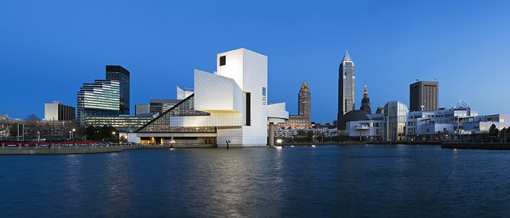History
There are 13,040 township governments in the United States. This is the story of one of them. The region, which is now known as Bath, wasn’t officially owned by the government until the Treaty of Fort Industry in 1805. The first permanent settlers, Jonathan Hale and Jason Hammond came five years later, and eight years after that, in 1818, the township was officially organized.
This history behind the township’s name is an interesting story in itself. The area had originally been known as simply Number 3, Range 12, of the Western Reserve, but this was superceded by Wheatfield, and then Hammondsburgh, after one of the early settlers. The question of a new name then came up at one of the town meetings; but discussion dragged on and was seemingly endless. Finally Jonathan Hale, another early settler, rose and exclaimed, “O, call it Jerusalem, Jericho, Bath, or anything but Hammondsburgh!” The motion was quickly passed and the township adopted the name of Bath, which, if nothing else, placed it first in the alphabetical listing of the county townships.
The township government was patterned after the local form of government with which the settlers had been familiar in Connecticut and the other New England states. Three trustees, a clerk, and a justice of the peace served as the elected officials. The early township records have been lost, but only one of these first officials has been positively identified, this is Dr. Henry Hutson, who served as the first Justice of the Peace. The first constable, who was appointed by the trustees, was Eleazer Rice. Partial records have shown that Jonathan Hale and Jason Hammond were early trustees, but the exact dates of their terms of office are not known.
The first constable, Eleazer Rice, was also involved in the first case of assault in the township. Eleazer was small in stature and not well liked. Two men, Lewis Hammond and Isaiah Fowler had tipped over Eleazer’s sled as a practical joke. They were summoned to appear before the Justice of the Peace, but upon reaching the outside of his house and seeing Eleazer, they lost their courage and took off in opposite directions. Eleazer unfortunately chose to chase the larger of the two, Lewis Hammond. When he caught up with him he leaped on his back, but Hammond, undaunted by the additional weight, continued running. When last seen he was still galloping through the woods.
The earliest available township records giving the names of the elected officials are trustee’s records dating from 1865. Some of these early trustees included: Gerry Pardee, Abijah Spencer, Roswell Hopkins, Thomas Pierson, H.H. Mack, Peter Miller, Luke Wuckoff, and Jospeh Brimley. Holding the office of clerk at this time were: W.H. Rozelle, John Spears, Abraham Harshey, G. Thorp, and John Davis. Other appointed offices included constables, road supervisors, and ditch supervisors. When the township was started it was part of Medina County, but it became part of Summit County in 1840 when this county was first formed.
The early duties of the township trustees were concerned mainly with the maintenance and upkeep of the roads, the town hall, and the cemeteries. Although the trustees were not permitted to pass ordinances, they could levy taxes for upkeep. This was the case for road taxes. The early farmers either had to pay the road tax or periodically repair the road in front of their property with their farm equipment. Other duties which the trustees occasionally performed were buying groceries for the poorer families, and giving out bonuses to war veterans. Trustees no longer have the power to perform these two services, due to state legislation. Since the early trustees had to authorize anything dealing with roads, farmers even had to obtain the permission of the trustees to graze their cows along the road. An example of this is an excerpt from the minutes of the trustees meeting held April 21, 1866. “This day the trustees granted the following permits for cattle to run at large in the highway: Benjamin Point, John C. Sallman, C. Smith, Oliver Thorp, W.A. Rozelle, and W.W. Williamson.” Since the roads were, for the most part, self-maintained, and the maintenance cost of the town hall and cemeteries was low, the early appropriations were small. A comparison of the 1967 and 1867 expenditures show that in 1867 $664.56 was spent while one hundred years later, $179,000.00 was needed.
The first regular fire station in Bath was organized in 1922. The Stony Hill Fire Department, which was operated from 1935-1965, also served Bath. The equipment of this department was bought and furnished by the volunteers. Before these fire stations were established, bucket brigades and other haphazard techniques were the only methods for fire fighting. This is the reason why few of the old mills and stores are still standing. As Bath progressed through the years, the importance of fire and police protection increased.






